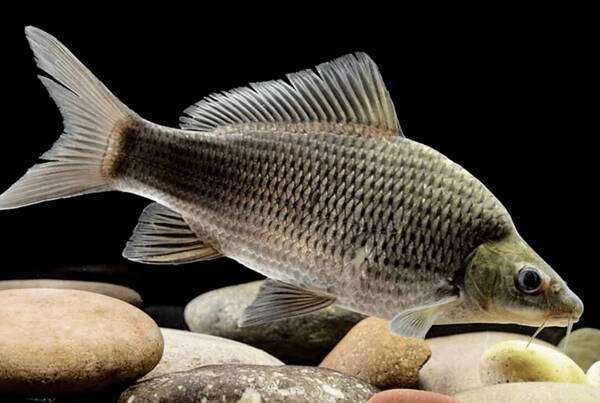The Latin name of rock carp is Procypris rabaudi, and its foreign name is Rock carp. It is a high-quality economic fish.

The rock carp is a wide-temperature fish, and its survival water temperature is 1.5℃-37℃, the living temperature range is 2~ 36℃, and the most suitable feeding temperature is 18~30℃. When the water temperature is above 8-9℃, they start to eat, but the amount of food they eat accounts for a small proportion of their body weight, about 0.3%-0.5%. When the water temperature is above 31-31.5℃, their appetite is significantly reduced. When the water temperature exceeds 35℃, they basically stop eating. They can still live normally when the dissolved oxygen is 2.0-2.5 mg/L. The best dissolved oxygen for feeding and growth is above 3 mg/L. When the dissolved oxygen in the breeding water is lower than 0.75-0.93 mg/L, they begin to float. When the dissolved oxygen is lower than 0.55 mg/L, the fish become sluggish, their breathing rate speeds up, and they die. The pH range for normal activities and feeding and growth is 6.5-8.8. When the pH is lower than 5.8 or higher than 9.2, they basically stop eating and growing, and their body color changes to grayish white.
Rock carp has a thick body, a small body cavity, tender meat, delicious taste, few intermuscular spines, high meat content, and rich nutrition. Every 100 grams of meat contains 16 grams of protein, 4.5 grams of fat, and minerals such as calcium, phosphorus, and iron. It is particularly popular among consumers and is a high-quality and precious edible economic fish.
Due to environmental pollution in rivers, the water conservancy facilities between rivers and lakes have an adverse impact on the ecological environment of fish, and the long-term overfishing and overfishing in natural water bodies have seriously reduced resources. Rock carp is basically on the verge of extinction in the middle and lower reaches of the Yangtze River and tributaries. It is now listed as a vulnerable species in the country.
Rock carp is large in size, has a normal growth rate, is omnivorous and carnivorous, has a wide source of feed, and has a high utilization rate of artificial compound feed. It has the advantages of few diseases and wide adaptability. It is suitable for ponds, lakes, reservoirs, intensive breeding in most parts of my country. my country has now successfully carried out research on artificial breeding seedlings and artificial breeding technology of rock carp. Due to its good market prospects and high economic benefits, it can become an artificial breeding variety of freshwater precious fish.
In December 2021, it was included in the third batch of "List of National Key Protected Aquatic Wildlife for Artificial Breeding" by the Ministry of Agriculture and Rural Affairs.
Listed in the second level of "List of National Key Protected Wildlife in China". (Wild populations only)
Protect wild animals and stop eating game.
Maintaining ecological balance is everyone's responsibility!